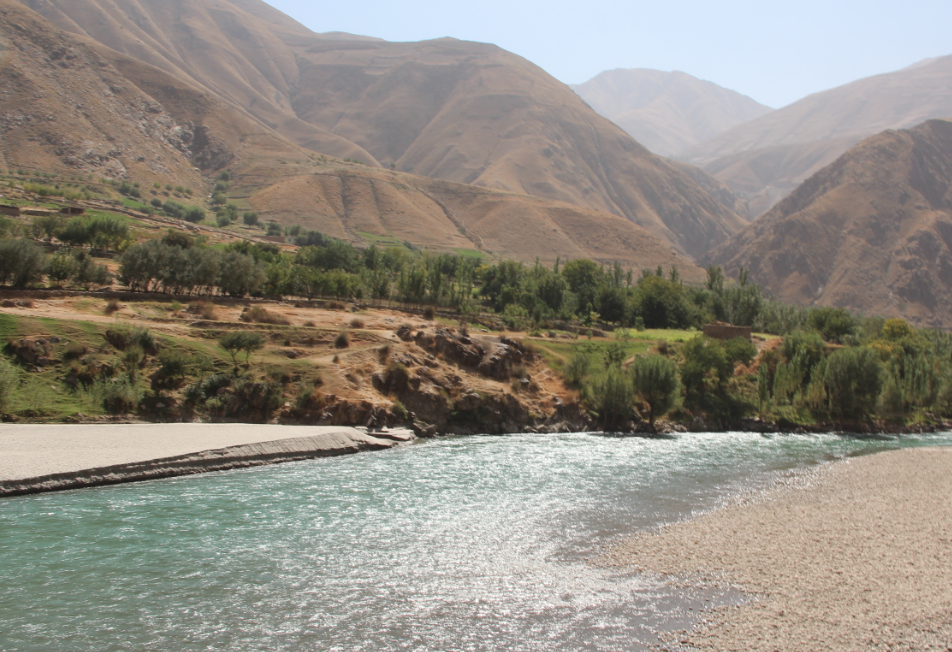Water is a very politically charged issue here in Afghanistan, particularly in areas bordering Pakistan and Iran, as I explain in a Time article. Tensions over trans-boundary water issues have meant that international donors have stayed away from investing in developing Afghanistan’s water infrastructure, out of fear they might upset the two neighbors. For a country that has a largely agricultural economy, that is bad news - particularly when it’s trying to fight its status as the world’s largest opium producer.
The case of eastern Nangarhar province is a good example of how the counter-narcotics fight has not addressed the fundamental needs of farmers, better irrigation being one of them. And so the gains in poppy eradication are slipping away quickly because alternative crops, without development in water infrastructure, don’t yield enough to meet their needs. In areas where there have been investments in water infrastructure, the farmers have been more welcoming of a process of diversifying their crops.
Nangarhar falls within the Kabul river basin, one of the country’s five, which largely flows to Pakistan without being used along the way due to poor infrastructure. “The distribution of the available water [in Afghanistan] does not always correspond with the location of the irrigable land and the settled populations,” says a UN report on Afghanistan’s water resources. The Kunar River provides 70 percent of the water for the Kabul river basin, but “most of the water leaves the country without being used farther upstream, where 88 percent of the land and 92 percent of the population in the Kabul river basin are located.”
Nangarhar’s poppy cultivation averaged 15,000 to 20,000 hectares per annum during the 1990s and early 2000s, according to researcher David Mansfield. In 2008, however, Nangarhar was declared a “poppy free” province by the UN, and this was largely credited to the efforts of the governor, Gul Agha Sherzoy.
“What success the governor had with his counternarcotics strategy was attributed to his use of tribal elders as enforcers,” argues Dipali Mukhopadhyay, of Columbia University, in her upcoming book “Warlords, Strongman Governors, and State Building in Afghanistan.” Mukhopadhyay has been conducting research in Afghanistan since 2007. “When informal attempts by elders or mullahs failed to convince farmers not to plant or to eradicate their own crops, law enforcement authorities arrested cultivators and imprisoned them for days at a time to demonstrate their intention.”
But, today, Nangrahar is no longer listed as poppy free. The UNs' Office on Drugs and Crime (UNODC) said the province cultivated 2,700 ha in 2011 and declared the cultivation level as “moderate.”
“The question of how enduring these reductions [in poppy cultivation] will be depends in part on the presence of viable alternatives to opium production,” writes Mansfield. In parts of Nangarhar - upper Surkhrud and lower Kama - Mansfield reports a growing sign of crop diversity: Farmers embrace cash crops such as squash, marrow, pea, aubergine and coriander. “Many farmers in this area have also started cultivating three crops per year on part of their land. For example, a crop of fresh or green onion planted in November is followed by tomato in March and a summer crop of maize or cotton in June.”
Mansfield attributes the embrace of new crops to better water flow as a result of infrastructure investments, and the expansion of a local bazaar that has turned into “a regional market center for eastern districts of Nangarhar.”
While the trans-boundary tensions have impacted investment in larger water projects, officials also complain of mismanagement inside the government. The water law took several years to pass, yet many government entities still jockey for control of the resource as theirs to manage.
“Ministry of Water and Energy says it belongs to them; Ministry of Agriculture says they used 98 percent of the water so it is a resource they should be managing; Ministry of Mines says they need it and it's their resource,” a senior government official told me recently. “We have wasted all our time trying to argue and sort out these tensions.”
What is obvious is this: only about 5 percent of the massive international investment and aid in the past decade has gone into the water sector, according to the UN-commissioned report. So as the international gaze begins to shift away from Afghanistan, development of water infrastructure increasingly seems like another “opportunity lost.”
